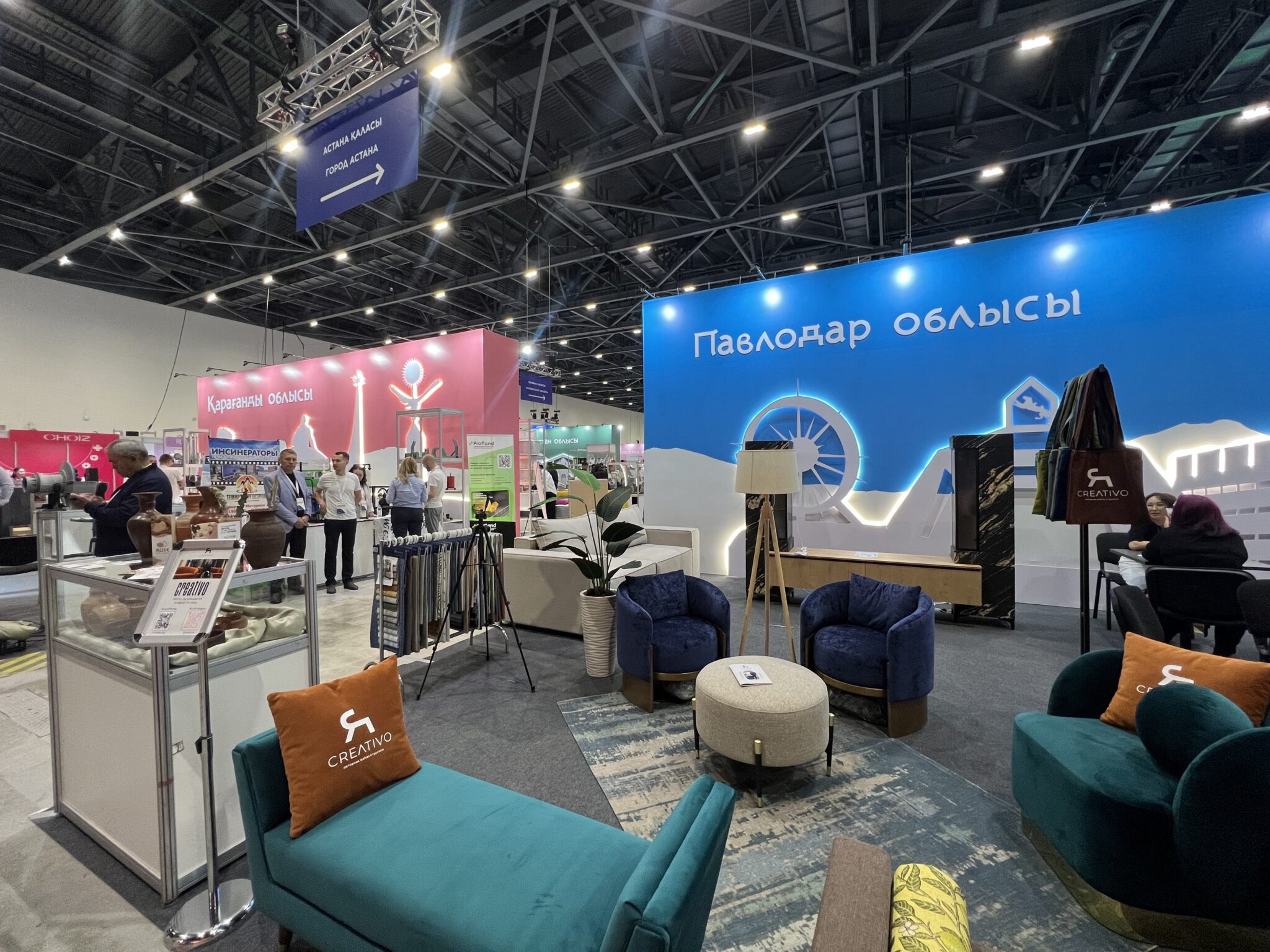WNAM MONITORING: ASTANA — More than 350 Kazakh companies from across the country display thousands of locally made products from machinery and food to clothing and jewelry at the eighth annual Ulttyq Ónim (National Product) 2025 exhibition in Astana on May 16-18.
Opening the exhibition, Deputy Prime Minister and Minister of National Economy Serik Zhumangarin emphasized the role of small and medium-sized enterprises (SMEs) in Kazakhstan’s economic growth.
“The eighth Ulttyq Ónim exhibition is the clearest proof and demonstration of the growth of domestic entrepreneurship. Our producers are strengthening their positions within the country, entering export markets, and becoming recognizable brands abroad. Government support for SMEs will only continue to grow,” said Zhumangarin.
He highlighted priority investment sectors for 2025, including IT, logistics, tourism, food production, construction materials, mechanical engineering, light industry, and the chemical sector.
Business support and economic impact
According to the Damu Fund, in 2024, the Ministry of National Economy and Baiterek Holding allocated 336 billion tenge (US$659.3 million) to support entrepreneurship. Some 29,500 projects received loans worth 1.7 trillion tenge (US$3.34 billion), with 2,700 benefitting from concessional lending.
Rustam Karagoishin, the chairman of Baiterek Holding, reinforced the importance of long-term growth.
“Supporting domestic production is a strategic priority for the Baiterek holding. We believe that Kazakh businesses are the backbone of the national economy, a source of innovation and employment,” he said.
The exhibition also featured several panel discussions focused on entrepreneurship and banking. Farhat Sarsekeyev, chairman of the Damu Fund, spoke about the exhibition’s role in connecting key stakeholders.
“Today, the exhibition presents only a small but highly meaningful portion of the results of state support for business. Since its inception, the Damu Fund has supported over 225,300 projects, with total loans worth 14.1 trillion tenge (US$27.7 billion). As a result, more than 220,000 new jobs have been created and over 1.2 million jobs preserved, with approximately 130 trillion tenge (US$255 billion) worth of goods produced and nine trillion tenge (US$17.7 billion) in tax revenues generated,” said Sarsekeyev.
“We are proud that during the exhibition, every visitor can personally see and appreciate the diversity and quality of products made in Kazakhstan,” he added.
Entrepreneurship and banking
Elena Bakhmutova, the chairwoman of the Council of the Association of Financiers of Kazakhstan, emphasized the essential role of banks in SME development.
“Even without specific support mechanisms, banks have always financed businesses and will continue to do so,” she said.
According to Bakhmutova, Kazakhstan’s banking sector issued 18.9 trillion tenge (US$37 billion) in new business loans in 2023, an 18.5% increase year-on-year. Large businesses received eight trillion tenge (US$15.7 billion) in loans, a 23% rise from the previous year and mainly for investment projects. Loans to SMEs also grew: lending to small businesses rose by 15%, and to medium-sized ones by 18%.
The number of business borrowers increased from 441,000 to 532,000 in 2024. In the first quarter of this year alone, small businesses received 1.7 trillion tenge (US$3.34 billion), while medium-sized businesses obtained 505 billion tenge (US$990 million).
“Small businesses accounted for 73% of the overall loan growth,” said Bakhmutova, highlighting increased activity in food production and manufacturing.
Aidos Zhumagulov, board member of Freedom Bank Kazakhstan, highlighted the bank’s digitalization of SME lending and its ecosystem for microbusinesses.
“If a bank receives a state support program, it should help promote domestic products (…) This is true inclusion, accessibility, transparency and digitization in action,” said Zhumagulov.


